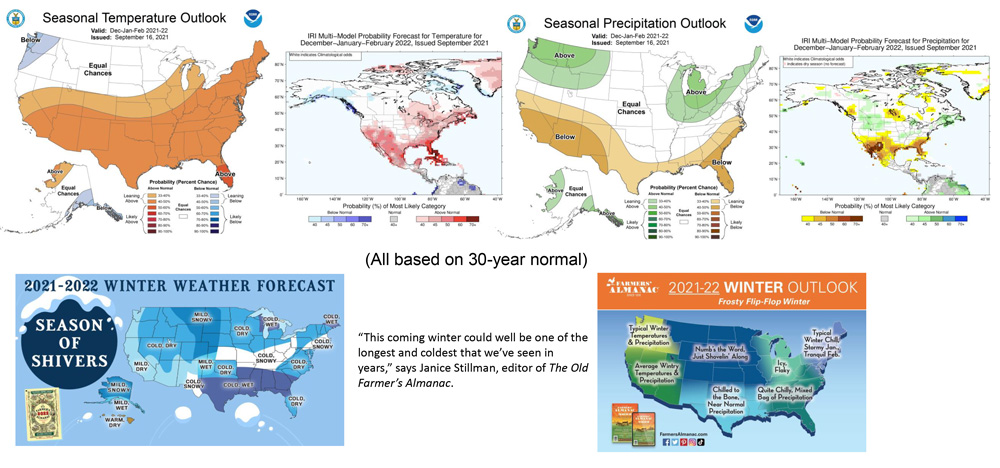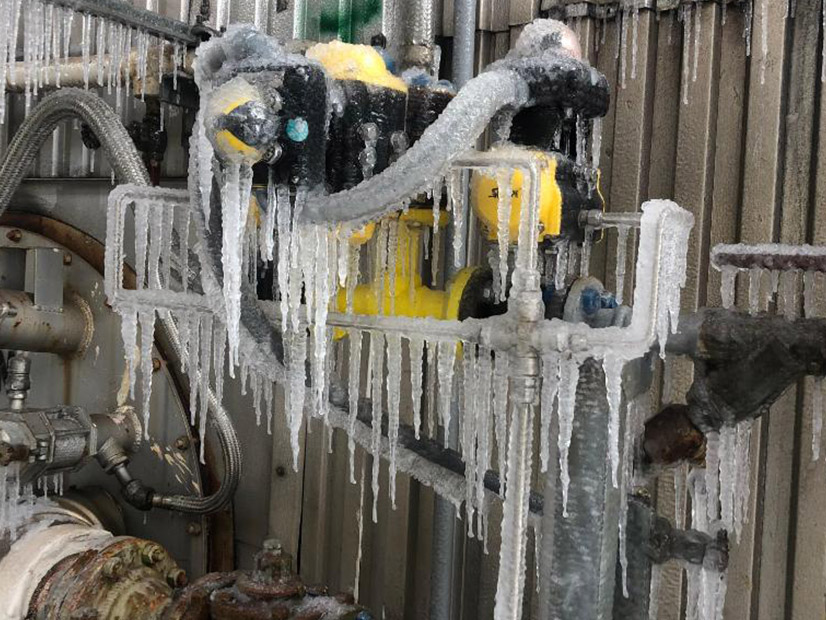Kicking off the Texas Reliability Entity’s annual winter weatherization workshop last week, CEO Jim Albright noted a “renewed focus by all of us on winter weather.”
That’s no surprise, given the February winter storm that drove the ERCOT grid to the brink of collapse and led to human and financial suffering across Texas. A joint inquiry by FERC and NERC has since pinpointed a lack of winter weatherization of generator facilities and natural gas infrastructure as the leading cause of the power outages that left some Texans in the dark and cold for almost four days. (See FERC, NERC Share Findings on February Winter Storm.)
State lawmakers and regulators responded to the storm by taking a more aggressive response to weatherization, requiring generators and transmission service providers (TSPs) to comply with mandatory reliability standards for winter weather and imposing financial penalties if they don’t. (See “Weatherization Rule Published,” PUC Workshop Takes First Stab at Market Changes.)
FERC Chair Richard Glick, in discussing the joint inquiry with NERC last month, noted that the two regulators proposed similar requirements after a previous winter event in 2011. However, “that recommendation was watered down to guidelines that few generators followed,” he said.
This time, it will be different, Jeff Billo, ERCOT’s director of forecasting and ancillary services, said during Thursday’s virtual workshop.
“Previously, we really didn’t have any mandatory reliability standards from a weatherization standpoint,” he said, adding that there will be “substantial fines.” Penalties can range as high as $1 million/day.
“Future inspections will be very different than they have been in the past,” Billo said.
The Public Utility Commission’s draft rule directs generators and TSPs to file compliance statements, signed by a senior-level officer, attesting to their actions. ERCOT staff will follow up with on-site inspections. With about 800 resource units to inspect, Billo said ERCOT is taking a “risk-based” approach and will focus on those generators that failed during the winter storm. That will likely include wind farms and solar fields, Billo said.
The grid operator’s staff are currently developing an online compliance form that will be distributed before the Dec. 1 response deadline. ERCOT is required to file a report with the PUC by Dec. 10.
“If we have 800, 900 units to look at, we don’t want [response] emails in formats we’ll have to sort through in eight or 10 days,” Billo said.
ERCOT used to inspect about 80 units a year, Billo said. The increase has forced the grid operator to create a weatherization director’s position and hire additional staff to meet the load. In the meantime, staff will rely on support from contractors to meet a Dec. 24 inspection deadline.
The commission will add temperature requirements to its reliability standards next year, following a detailed weather report due early next year.
ERCOT meteorologist Chris Coleman told his virtual audience that the La Nina ocean patterns are similar to last year’s and that a majority of forecasts are pointing to a colder-than-normal winter. While much of the cold air may be concentrated in the Midwest, he said, “The potential is there for a polar vortex for ERCOT a time or two.”

“Statistically, when you have a cold, extreme winter, at least some, if not more, of those winters were followed by some extreme cold, though not as extreme” as the previous winter, Coleman said.
The meteorologist’s final forecast will be released in November.
Generation Owners Share Tips
Andrew Valencia, Lower Colorado River Authority’s (LCRA) senior vice president of generation and the man who will sign the utility’s compliance statement, was among several market participants and industry experts who shared their insight during the workshop.
He said a power plant is only as good as its weakest link, noting subsystems and major equipment are typically designed for specific minimum temperatures that may or may not be consistent. The highest temperature rating sets the entire plant’s rating, but that can be a moot point when sub-zero temperatures hit.

He said activating temporary heat sources, frequently checking equipment and adding staff are among hundreds of procedure provisions necessary required to maintain operations.
LCRA begins its winter preparations in the fall with meetings to review written procedures and checklists for each site. Supply inventories and equipment are checked and senior leaders tour each site to verify preparations.
“That’s the best time to work on it. You don’t need the preparation measures, and you have time to work on the protection,” Valencia said.
El Paso Electric’s Kyle Olson said the utility invested $4.5 million in freeze protection systems after losing generation, much of it built before 1980, during the 2011 winter event. The utility also added a gas unit designed to withstand ‑10 degrees Fahrenheit, chose simple cycle turbines over combined cycle, and installed dual-fuel capability on new additions.
The utility wound up meeting demand that was almost 37% above normal. Being part of WECC and separated from ERCOT helped, as one social media meme was quick to notice.
“The heat tracing money paid off,” Olson said, citing $19 million in customer savings during the February storm. “In a city where summer temperatures reach 105 [to] 110, people aren’t constantly thinking about winter protections.”



